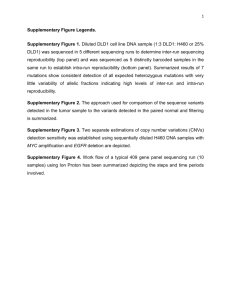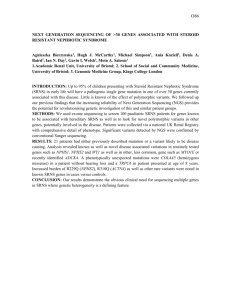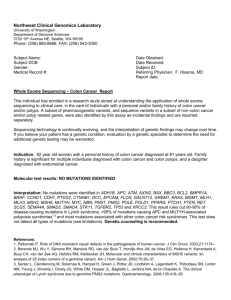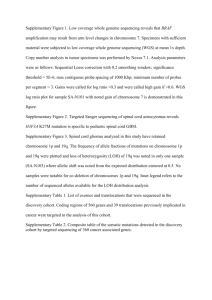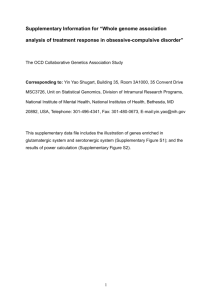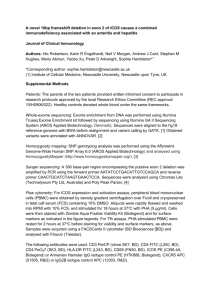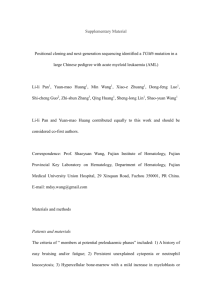SUPPLEMENTARY MATERIAL Infantile Leigh-like syndrome
advertisement
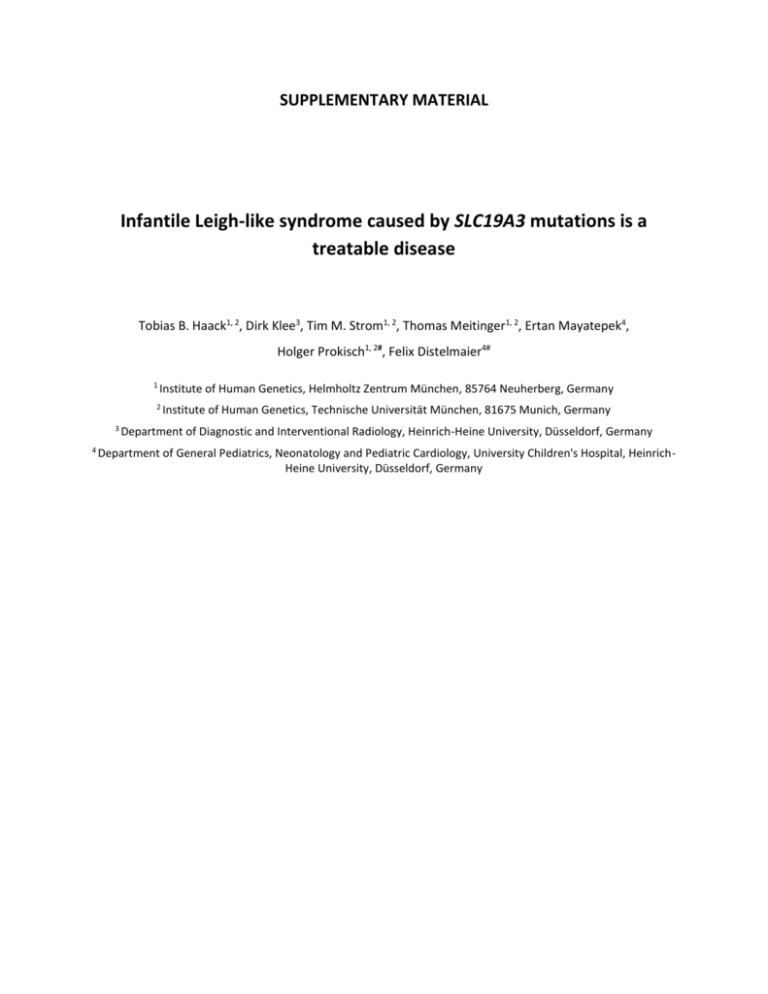
SUPPLEMENTARY MATERIAL Infantile Leigh-like syndrome caused by SLC19A3 mutations is a treatable disease Tobias B. Haack1, 2, Dirk Klee3, Tim M. Strom1, 2, Thomas Meitinger1, 2, Ertan Mayatepek4, Holger Prokisch1, 2#, Felix Distelmaier4# 1 Institute of Human Genetics, Helmholtz Zentrum München, 85764 Neuherberg, Germany 2 3 4 Institute of Human Genetics, Technische Universität München, 81675 Munich, Germany Department of Diagnostic and Interventional Radiology, Heinrich-Heine University, Düsseldorf, Germany Department of General Pediatrics, Neonatology and Pediatric Cardiology, University Children's Hospital, HeinrichHeine University, Düsseldorf, Germany SUPPLEMENTARY METHODS Exome sequencing and variant filtering We used exome sequencing to investigate the genetic basis of the disease in patient #74115. Genomic DNA was extracted from patient-derived fibroblast cell lines using standard protocols. A SureSelect Human All Exon 50 Mb V5 Kit (Agilent) was used for enrichment of coding DNA fragments. Sequencing was performed on a HiSeq2000 system (Illumina). BWA (version 0.5.8) was used for read alignment to the human reference assembly (hg19) and single-nucleotide variants (SNVs) and small insertions and deletions were detected with SAMtools (version 0.1.7). For detailed sequencing statistics see Supplementary Table 1. Prioritization of candidate disease genes was essentially performed as reported previously (Haack et al., 2012). The analysis was focused on non-synonymous variants. Based on the rare disease phenotype we expected the disease-causal mutations to have a low frequency in general populations. We therefore excluded variants present in 3,600 control exomes and public databases. Furthermore, we assumed an autosomal recessive mode of inheritance. Accordingly, we searched for genes carrying predicted compound heterozygous or homozygous mutations. This filter left 28 genes. Only one gene, SLC19A3, carried two predicted loss-of-function alleles (Supplementary Table 2). Primers and PCR conditions for confirmatory Sanger sequencing are provided upon request. References Haack TB, Haberberger B, Frisch EM, Wieland T, Iuso A, Gorza M, et al. Molecular diagnosis in mitochondrial complex I deficiency using exome sequencing. Journal of medical genetics. 2012 Apr;49(4):277-83. SUPPLEMENTARY TABLES Supplementary Table 1 Next generation sequencing statistics Id Type #74115 SureSelect50Mb V5 Reads Mapped 105200293 104391066 Percent Seq (Gb) on bait Avg cov Cov 1x Cov 4x Cov 8x Cov 20x 99.23 10.63 126.73 99.9 99.7 99.3 97.1 76.12 Supplementary Table 2 Variants identified at different filtering levels in individual #74115. Variants filtering Synonymous variants 11,628 Non-synonymous variants (NSV) 12,304 NSV absent from 3,600 control exomes and public databases 213 Genes carrying > 2 NSV 28 Genes carrying > 2 loss-of-function alleles 1 (SLC19A3) NSV = missense, nonsense, stop/loss, splice site disruption, insertions, deletions
